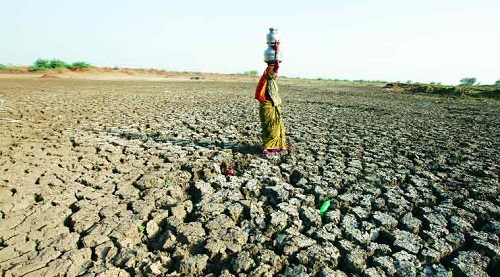Guwahati (ISJ): India’s government-funded think-tank National Institute for Transforming India (NITI) Ayog has estimated that the country is suffering from the worst water crisis in its history and millions of lives and livelihoods are under threat.
A report by NITI Ayog released in 2018 said, 600 million Indians face high to extreme water stress and about 200,000 people die every year due to inadequate access to safe water. “The crisis is only going to get worse,” reads the report.
Scientists from across the globe have been trying to tackle this crisis by exploring every source of water, including attempts to collect and conserve water through non-traditional means, to offset the growing demand. In one such attempt, researchers at the Indian Institute of Technology (IIT) Guwahati have developed novel materials that can efficiently harvest water from humid air.
“Such water-harvesting techniques use the concept of hydrophobicity or water-repelling nature of some materials”, explained Dr Uttam Manna, Associate Professor, Chemistry department and Centre of Nanotechnology, IIT Guwahati.
The concept of hydrophobicity can be understood by looking at the lotus leaf. The lotus leaf is water repellent because there is a layer of trapped air between the leaf surface and the water droplet, which causes the droplet to slide off the leaf.
However, simple hydrophobicity such as this is unsuitable for water harvesting from highly humid environments because high moisture content can displace the trapped air and cause permanent damage.
Instead, researchers mimic the pitcher plant, an ‘insect-eating’ plant that has a slippery surface that causes insects that land on it to fall into its tube-shaped structure, to be digested. In the past geometries of rice leaves and cacti are associated with ‘Slippery Liquid-Infused Porous Surface(s)’ or SLIPS to improve the water harvesting performance.
The researchers produced a patterned hydrophilic SLIPS by spraying a sponge-like porous polymeric material on top of a simple A4 printer paper. Further, chemically modulated hydrophilic spots were associated with the coating before lubricating with two distinct types of oils – natural olive oil and synthetic krytox. This surface could harvest water from foggy/water vapour laden air without the need for any cooling arrangement.
“We have produced a highly efficient water harvesting interface where the fog collecting rate is as high as 4400±190 mg/cm2/h,” explained the lead researcher, Dr Manna.
The researchers have also compared the performance of their pitcher-plant-inspired SLIPS materials to other bio-inspired ideas and have found it to be superior in terms of efficiency of water harvesting.
Apart from water harvesting, SLIPS could be used for other purposes, such as easily cleanable household appliances, underwater hulls of ships and submarines to prevent bio-fouling and anti-icing windows for aircraft.
The research finding was published in the journal The Royal Society of Chemistry.
Source: India Science Wire
Image Credit: Wikimedia Commons


